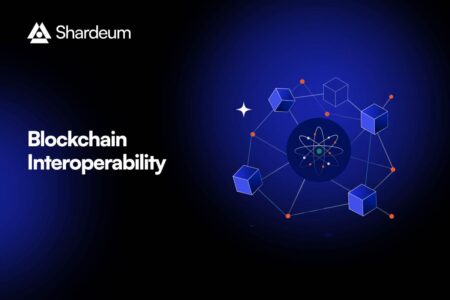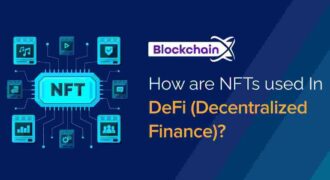Blockchain technology has sparked a revolution in finance, supply chains, digital identity, and more. Yet, as the ecosystem grows, one critical challenge remains: interoperability. Despite the promise of decentralization, most blockchain networks currently operate in silos, limiting cross-chain communication, asset transfer, and collaborative innovation.
The ability for different blockchains to work together seamlessly — known as interoperability — is not just a technical feature; it’s a key factor in the mass adoption of blockchain technology. Without it, the decentralized ecosystem risks fragmentation, inefficiency, and missed opportunities.
What Is Blockchain Interoperability?
Blockchain interoperability refers to the capacity of two or more distinct blockchain networks to exchange data, value, or information without intermediaries, while maintaining security, privacy, and decentralization.
Think of it as different operating systems on your computer being able to run the same software or communicate with one another. In blockchain terms, interoperability allows:
- Cross-chain asset transfers (e.g., moving tokens from Ethereum to Binance Smart Chain).
- Shared smart contract execution across platforms.
- Unified communication between decentralized applications (dApps).
In essence, interoperability transforms blockchain networks from isolated ecosystems into a connected, scalable, and collaborative web.
Why Interoperability Matters
- Breaking Silos
Without interoperability, blockchains operate independently, creating fragmented ecosystems. Assets, tokens, and data often cannot move freely, which limits utility and adoption. - Enhanced Liquidity
Cross-chain solutions allow assets to flow between networks, unlocking liquidity for DeFi platforms, NFT marketplaces, and tokenized assets. - Better User Experience
Users don’t need to juggle multiple wallets, platforms, or tokens. Interoperability simplifies access, reducing friction in the decentralized world. - Innovation Acceleration
Developers can leverage capabilities from multiple chains, combining features to create more powerful and versatile dApps. - Scalability and Resilience
Interoperable networks can distribute workloads across chains, reducing congestion, improving performance, and mitigating single points of failure.
Types of Blockchain Interoperability
There are several approaches to achieving interoperability, each with unique advantages and challenges:
1. Token-Level Interoperability
Enables cross-chain token transfers.
- Example: Wrapped tokens (e.g., WBTC on Ethereum) represent assets from another chain, allowing them to be used seamlessly across platforms.
2. Protocol-Level Interoperability
Involves protocols or frameworks that allow multiple chains to communicate.
- Example: Polkadot’s relay chain connects parachains, enabling data and asset transfer across independent networks.
3. Application-Level Interoperability
dApps can operate on multiple blockchains simultaneously, sharing data and interacting with smart contracts across networks.
- Example: A decentralized exchange (DEX) that supports Ethereum, Binance Smart Chain, and Solana simultaneously.
4. Blockchain Bridges
Bridges are mechanisms that connect two separate blockchains, allowing assets or data to move between them.
- Example: Wormhole bridges assets between Solana and Ethereum.
While bridges expand connectivity, they also introduce potential security risks if not properly audited.
Challenges in Blockchain Interoperability
Despite its importance, achieving seamless cross-chain interaction is not without hurdles:
- Security Concerns
Bridges and protocols can be targets for hacks, potentially exposing millions in digital assets. - Standardization
Each blockchain has unique protocols, consensus mechanisms, and token standards, making integration complex. - Latency and Speed
Cross-chain communication can introduce delays or higher transaction costs, particularly with busy networks. - Decentralization Trade-Offs
Some interoperability solutions rely on validators or custodians, partially reintroducing centralization. - Regulatory Uncertainty
Cross-chain transactions may trigger jurisdictional or compliance issues, especially with tokenized assets or financial instruments.
Overcoming these challenges is crucial for building robust, secure, and scalable interoperable networks.
Prominent Interoperability Solutions
Several projects are leading the way in connecting blockchain networks:
- Polkadot
A multi-chain framework with a relay chain connecting various parachains, enabling seamless cross-chain data and token transfers. - Cosmos
Known as the “Internet of Blockchains”, Cosmos uses the Inter-Blockchain Communication (IBC) protocol to link independent blockchains. - Avalanche Bridge
Facilitates fast and secure asset transfers between Ethereum and Avalanche networks. - Wanchain
Focuses on interoperable financial services, connecting Ethereum, Bitcoin, and other chains for decentralized finance. - LayerZero
A cross-chain messaging protocol enabling lightweight, secure communication between multiple blockchains, enhancing dApp interoperability.
These solutions are paving the way for a connected ecosystem, unlocking the full potential of decentralized technologies.
Benefits for Businesses and Developers
- Expanded Market Access
Projects can reach users across multiple blockchains, boosting adoption and engagement. - Enhanced Innovation
Developers can integrate features from different chains, creating richer applications. - Cost Efficiency
Interoperable networks allow workload distribution and reduces congestion fees, lowering operational costs. - Improved User Retention
Users enjoy seamless cross-chain experiences, reducing friction and onboarding barriers. - Future-Proofing
Interoperable systems are more resilient to network changes, forks, or upgrades.
The Future of Blockchain Interoperability
As blockchain adoption grows, interoperability will become a foundational requirement, not an optional feature. Key trends include:
- Cross-Chain DeFi: DeFi protocols leveraging multiple chains to maximize liquidity and yield opportunities.
- NFT Portability: NFTs moving seamlessly across marketplaces and virtual worlds.
- Enterprise Integration: Companies integrating private and public blockchains for supply chain, finance, and logistics.
- AI-Blockchain Synergy: AI analyzing data across interoperable chains to optimize decision-making, risk management, and predictive insights.
- Standardization Efforts: Development of universal protocols to simplify integration and reduce fragmentation.
The future points to a connected blockchain ecosystem, where assets, data, and applications flow freely — creating scalable, efficient, and user-friendly decentralized networks.
Conclusion
Blockchain interoperability is the key to unlocking the full potential of decentralized technology. By connecting disparate networks, it eliminates silos, enhances liquidity, and fosters collaboration across ecosystems.
From DeFi and NFTs to enterprise solutions and global payments, interoperability empowers users, developers, and businesses to innovate without limits. While challenges remain in security, standardization, and governance, the ongoing development of bridges, protocols, and cross-chain solutions signals a promising future.
In a world where blockchain networks are multiplying, interoperability is the glue that will unify them, creating a seamless, connected, and decentralized digital universe.
For the blockchain ecosystem, the message is clear: networks don’t need to compete in isolation — they thrive when they communicate and collaborate.










